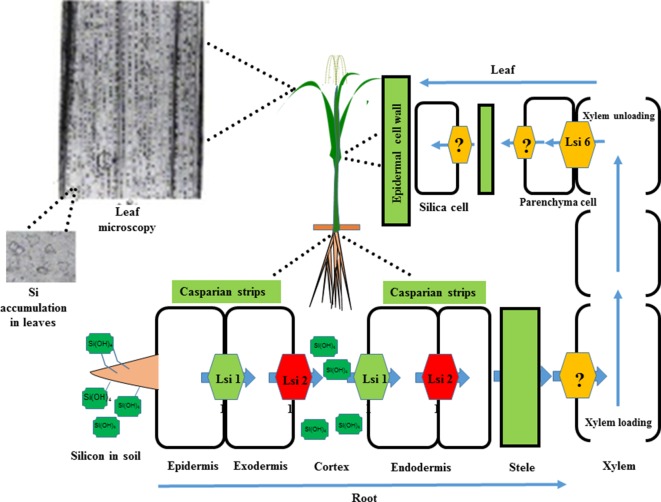Figure 3.
A schematic representation of Si uptake, transport, and accumulation in rice. Silicic acid from the soil solution is absorbed by the roots and transported to the root exodermis by the influx transporter (Lsi1) and subsequently released to the apoplast by the efflux transporter (Lsi2). Subsequently, it enters the root endodermis via Lsi1 and is released to the stele portion of the root via Lsi2. Finally, silicic acid is translocated by an unknown transporter into the xylem and transported to the shoots via the transpiration stream. In the leaves, silicic acid is unloaded by another influx transporter (Lsi6) and localized in the xylem parenchyma cells of leaf sheaths and leaf blades. In the shoots and leaves, Si is transformed from an aqueous form (silicic acid) to solid amorphous silica (SiO2–nH2O) and primarily deposited in the cell walls of different tissues, such as leaf epidermal cells. Modified from Yan et al. (2018).

